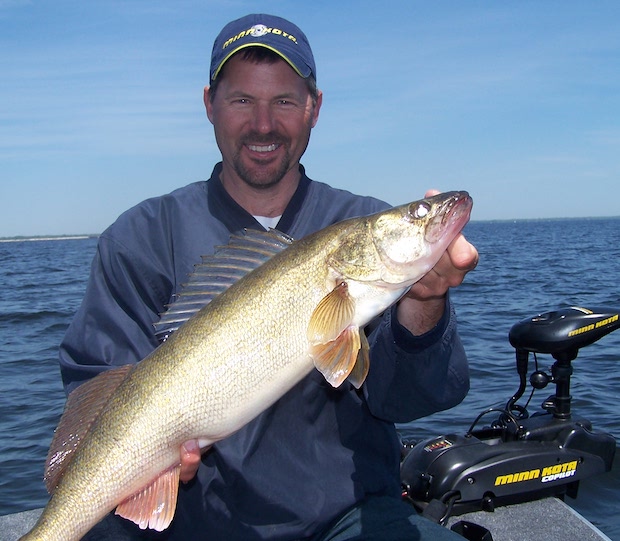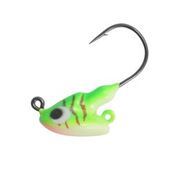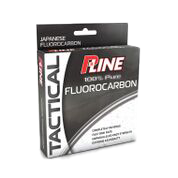News & Stories
Get ready for the 2019 Walleye Opener with our Super 7 Video Series
Posted by admin on May 3, 2019
Minnesota fishing guide and TV host Mike Frisch reveals his seven secrets for fishing success on Minnesota's 2019 walleye opener on this video series!
SUPER 7 SECRETS!
Fishing the Midwest TV host Mike Frisch is also a long-time Minnesota fishing guide. With Minnesota’s fishing holiday coming up this Saturday (aka “The Walleye Opener”), we put together a list of Mike’s top fishing secrets for opening day success and then built a video series around it! Check out day 1’s tip here:
SUPER 7 SECRETS! Day 2
Check out Fishing the Midwest TV host Mike Frisch’s Day 2 “secret” tip for success on Minnesota’s upcoming “Walleye Opener!”
Be sure to Subscribe to our YOU TUBE CHANNEL for more.
Slow down in the spring for more fish!
Posted by director on April 23, 2019

By Bob Jensen
If you want to be successful when you go fishing, you need to first, find the fish. Once you've done that, you need to give them what they want to eat. If you do those two things, you'll catch more fish more often.
One really important thing to remember is that fish behave differently at different times of the year. Sometimes they want a bait that's moving fast, other times they want a slower moving bait. In the spring when the water is cooler, a slow moving bait will usually catch more fish. Here are some ideas that will help you catch more fish in the next few weeks.
Jigs are perhaps the best presentation for walleyes in the spring. In many situations you'll be fishing for walleyes over sand, gravel, and emerging vegetation. Dragging a jig/minnow combo will be a productive technique, and the best style of jig to drag will be a stand-up jig.
When you drag a jig, you're casting the jig out, letting it sink to the bottom, then crawling, or dragging it back along the bottom. Frequent pauses in your retrieve will get reluctant fish to bite. You don't want to be hopping the jig: A slow retrieve will be much better.
A stand-up jig does just that: When you pause the jig, it stands up on the bottom. A round head jig lays flat on the bottom at rest. The fish can see the minnow on the stand-up jig much better when the jig is sitting still, which increases your odds for getting bit. One of the most popular and effective stand-up jigs is the stand-up Fire-Ball jig.
Probably the best technique for presenting a bait slowly is by employing a slip-bobber. With a slip-bobber, you can hang a bait right on a fish's nose. The key to bobber success is figuring out how deep you should set the bobber, and how deep the bobber is set depends on where the fish are. If the fish are near the bottom, you want the bobber set so your bait is near the bottom. You want your bait just a little bit above the fish, because fish will move up to take a bait, but rarely will they go down to take a bait.
You can use a small jig or hook below the bobber, and to that you’ll attach live bait, probably a minnow but there are times when leeches will be better. If you’re after panfish, plastics can be very good on the jig. If you’re using plastics, you'll need to impart some action by wiggling the rod tip. Live bait will provide its own action, and there are times when the action of live bait will be more productive. Trial and success are the best way to figure this out.
When jigging for walleyes, we’re going to be moving the baits slowly, so the fish are going to get a good look at the bait. And the take will often be soft, so we need a sensitive rod. 6 pound test Tactical fluorocarbon line on a Lew’s Custom Speed Stick Walleye Special rod will provide the invisibility and sensitivity that will enable us to catch more spring walleyes.
Once an angler understands that fish behave differently in different seasons, that angler will be more successful. Usually, if you move your bait slowly in the spring, you'll catch more fish.
Photo Caption: A trip back in time: Here’s Dean Arnoldussen with a spring walleye that wanted the bait moved very slowly.
To see new and older episodes of Fishing the Midwest television, fishing articles and videos, visit fishingthemidwest.com
Open Water Fishing Plans
Posted by director on April 17, 2019
By Bob Jensen
Open water fishing has started in many areas of the Midwest, and where it hasn’t started yet, it will soon. I have a few plans for the upcoming open water season that I hope to start putting into action soon. Following are some of those plans.
I plan and hope to go fishing more this season.
I plan to expand on the tactics that I’m most familiar and comfortable with. For instance, I’ve talked a lot about a 1-2 punch for largemouth bass that is very, very productive. In the summer months we’ll work down a deep weedline throwing crankbaits in search of bass that are willing to bite. We work along the weedline until the weedline stops. We then pick up our jig-worm rod and retrace our path along the weedline that we just worked with the crankbaits. We’ll usually catch more bass. The crankbaits take the willing biters while the jig-worm appeals to the less aggressive fish. Over the past several years, we’ve learned that Strike King Pro-Model crankbaits in a bluegill or perch pattern followed with an Ocho 6 inch worm in some form of watermelon color are appealing to largemouth bass in almost all Midwest waters where bass live.
But to expand on that technique, this summer, after working the crankbait along the weedline, we’ll go back through the area with a spinnerbait. We’ll work the spinnerbait slowly along the deep edge of the weedline, and I’m betting that we’ll catch bass that maybe haven’t seen too many spinnerbaits. We used to do this a lot: It’s time to do it again.
I plan to incorporate more fluorocarbon line into my fishing. I did not have a lot of confidence in fluorocarbon in the early days of its existence, but I have a lot of confidence in it now. Fluorocarbon is invisible under water, or at least as close to invisible as fishing line gets. It’s also tough stuff: It stands up to the underwater obstacles that damage more traditional lines. Tactical Fluorocarbon is the line that has given me confidence in fluorocarbon line.
I plan to relive my younger days of fishing. In my teens and early 20’s, I was limited to where I could fish by the lack of a boat and the ability to travel very far. I fished mostly small rivers, ponds, and lakes from shore or by wading. And I caught quite a few fish by doing so. Mostly smallmouth bass and northern pike, some walleyes and largemouth bass depending on where I was fishing. They were usually small to mid-sized, but they were all fun. The next generation of those fish, probably more likely the 6thor 7thgeneration of the fish that I used to catch are now swimming in those waters. They’re still willing to eat a bait, and I want to show them some baits. They’ll probably be the 6thor 7thgeneration of the baits that I used to use. It will be interesting to see how the areas that I fished 40 years ago look today. The areas will look different, but I’m guessing the fish will look the same. Maybe even better with these older eyes.
And, my last plan for the open water fishing season of 2019 is the same as my first plan: I plan and hope to go fishing more this season. I hope you do too.
PHOTO CAPTION: This mid-summer largemouth bass liked the looks of a crankbait worked along a deep weedline.
To see the newest and some older episodes of Fishing the Midwest television, fishing articles and videos, go to fishingthemidwest.com


